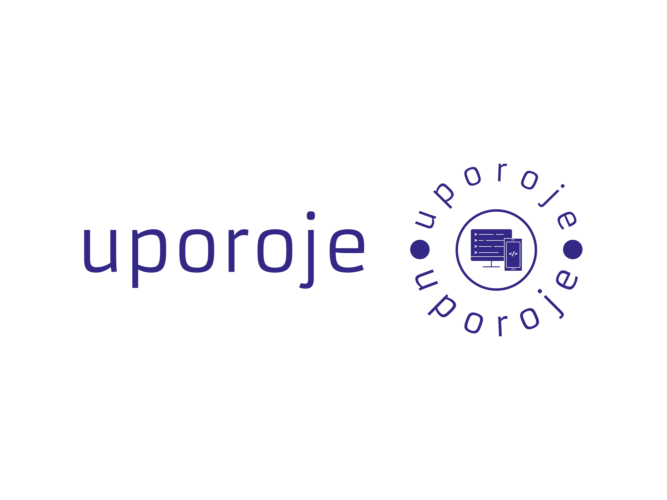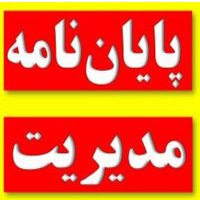عنوان: پایان نامه مدلسازی و حل مسئله زمانبندی جریان کارگاهی با زمانهای تنظیم وابسته به توالی، مدیریت
رشته: مدیریت آموزشی
فرمت فایل: WORD (قابل ویرایش)
تعداد صفحه: 120
مقدمه
برنامه ريزي1 عبارتست از تصميم گيري براي آينده و برنامه ريزي توليد به معني تعيين استراتژي توليد به جهت نحوه تخصيص خطوط توليدي براي پاسخگويي به سفارشات مي باشد. از برجسته ترين موارد در تهيه برنامه زماني توليد جهت خطوط توليدي، تعيين اندازه انباشته و توالي سفارشات و نحوه تخصيص منابع در طول زمان است [1].
ما همواره در مکالمات روزمره خود از اصطلاح زمانبندي2 استفاده مي کنيم، هر چند که ممکن است هميشه تعريف مناسبي از آن در ذهن نداشته باشيم. در حقيقت مفهوم آشنايي که ما عموما از آن استفاده مي کنيم فهرستي از برنامه هاست و نه زمانبندي. مستندات و برنامه هاي ملموس همچون برنامه کلاسي، برنامه حرکت اتوبوس و غيره. يک برنامه معمولا به ما مي گويد کي وقايع اتفاق مي افتد. جواب به سئوالاتي که با کي شروع مي شوند، معمولا اطلاعاتي در مورد زمان به ما مي دهد. حرکت اتوبوس از ساعت 6 شروع مي شود و تا ساعت 20 ادامه دارد. شام در ساعت 21 سرو خواهد شد و مواردي از اين دست. در برخي موارد نيز پاسخ ها به توالي وقايع اشاره مي کند. اتوبوس پس از روشن شدن هوا حرکت مي کند و شام پس از نظافت سالن سرو مي شود.
– محدوده تحقیق و اهداف آن
سلولهاي توليدي1 معمولا شامل يك گروه از ماشين آلات كه به توليد محدوده مشخصي از خانواده ها2 تخصيص داده شده اند مي باشد. يك خانواده يك مجموعه اقلام3 است كه نيازمندي مشتركي به لحاظ ابزار و توالي هاي عملياتي دارند. در اين محيط، توليد سلولي نيازمند سه فعاليت برنامه ريزي، قبل از توليد واقعي است. نخست گروهبندي ماشين آلات در سلولهاي توليدي مختلف (فرم دهي سلولها4). دوم، اقلام باید به ماشين آلات مشخص در سلولهاي توليدي، تخصيص داده شوند (بار دادن به ماشين آلات5). سوم، اقلام باید در هر سلول توليدي زمانبندي شوند [5 و 6]. اغلب چنين مسائل زمانبندي شامل سلولهاي توليدي چندتايي و احتمالا پيچيده است.
پیشنهادها
در ارتباط با روش HSA، با مقایسه زمانهای حل بخشهای مختلف الگوریتم، مشاهده می شود که بیشترین زمان حل مربوط به یافتن جواب اولیه و همچنین بررسی شدنی بودن توالی است. بنابراین یافتن یک روش محاسباتی جهت دستیابی به جواب اولیه با سرعت بیشتر برای این گونه مسائل می تواند به عنوان یک زمینه مطالعاتی مناسب مطرح باشد.
همچنین حذف تمامی فرضهای محدود کننده مسئله که در فصل دوم اشاره شده اند می توانند زمینه های مناسبی جهت تحقیقات آتی باشند. مثلا لحاظ نمودن زمانهای احتمالی یا فازی جهت پردازش هر کار که در شرایط واقعی نیز می تواند مصداق داشته باشد.
از طرفی درنظرگیری امکان خرابی با یک احتمال مشخص و یا نامشخص برای خط تولید پس از پردازش و یا در هنگام پردازش هر کار و همچنین متفاوت بودن این احتمال با توجه به ماهیت و سختی هر کار می تواند زمینه تحقیقاتی مناسبی باشد. در این شرایط، ما در زمان ایجاد خرابی، باید زمانی را صرف تشخیص رفع عیب خرابی کنیم.
وجود هزینه و زمان پردازش بین کارهای متعلق به یک سفارش، امکان انقطاع در پردازش یک سفارش بدین معنی که می توان پردازش یک سفارش را قطع نمود و سفارش دیگری را شروع کرد و همچنین امکان وجود کارهای نامتشابه در یک سفارش از دیگر زمینه های مطرح در ارتباط با تحقیقات آتی می باشند.
نهایتا لحاظ نمودن توابع هدف چند معیاره و واقعی تر با توجه به ماهیت هر صنعت جهت بررسی بیشتر می تواند به عنوان زمینه تحقیقاتی مناسب مطرح باشد. البته در ارتباط با مسائل زمانبندی، همواره ارائه روشهای ابتکاری و فراابتکاری به منظور کاهش اختلاف جوابها از جواب بهینه و کاهش زمان حل، یک زمینه جذاب برای تحقیق می باشد.
منابع
1. Arnoldoو C. Hax, Dan Candea, 1984. Production and Inventory Management, 2th. New York.
2. Kenneth R. Baker, 1996. Elements of sequencing and scheduling, 3th. University of Toronto bookstores.
3. Deepu Philip, 2005. Scheduling Reentrant Flexible Job Shops With Sequence Dependent Setup Times, MS Thesis, Montana State University.
4. Gupta D., Magnusson T., 2005. The capacitated lot-sizing and scheduling problem with sequence-dependent setup costs and setup times, Computers & Operations Research 32, 727-747.
5. Paulo M. França, Gupta J.N.D. Alexandre S., Mendes, Pablo Moscato, Klaas J. Veltink, 2005. Evolutionary algorithms for scheduling a flowshop manufacturing cell with sequence dependent family setups, Computers & Industrial Engineering 48(3), 491-506.
6. Schaller E. Gupta J. N. D. Vakharia J., 2000. Scheduling a flowshop manufacturing cell with sequence dependent family setup times, European Journal of Operational Research 125(2), 324-339.
7. Johnson S.M., 1954. Optimal two- and three-stage production schedules with setup times included. Naval Research Logistics Quarterly 1, 61–68.
8. Handbook of Industrial Engineering, 2th Edition., 1992. Salvendy G, editor.Ostwald P.F.
9. Allahverdi A. Gupta J.N.D. Aldowaisan T., 1999. A review of scheduling research involving setup considerations, OMEGA, International Journal of Management Science 27, 219–239.
10. Ruiz R. Maroto C., 2004. A comprehensive review and evaluation of permutation flowshop heuristics. European Journal of Operational Research [to appear].
11. Pinedo M., 1995. Scheduling: Theory, Algorithms, and Systems. 4th. Prentice Hall, NJ.
12. Eren T. Güner E., 2006. A bicriteria scheduling with sequence-dependent setup times, Applied Mathematics and Computation 179(1), 378-385.
13. Cheng T.C.E. Gupta J.N.D. Wang G., 2000. A review of flowshop scheduling research with setup times. Production and Operations Management 9, 262–282.
14. Garey M.R. Johnson D.S. Sethi R., 1976. The complexity of flowshop and job-shop scheduling, Mathematics of Operations Research 1(2), 117–129.
15. Campbell H.G. Dudek R.A. Smith M.L., 1970. A heuristic algorithm for the n job, m machine sequencing problem. Management Science 16(10), B630–B637.
16. Nawaz M. Enscore Jr E.E. Ham I., 1983. A heuristic algorithm for the m-machine, n-job flowshop sequencing problem. OMEGA, The International Journal of Management Science 11(1), 91–95.
17. Osman I.H. Potts C.N., 1989. Simulated annealing for permutation flowshop scheduling. OMEGA, The International Journal of Management Science 17(6), 551–557.
18. Widmer M. Hertz A., 1989. A new heuristic method for the flowshop sequencing problem. European Journal of Operational Research 41, 186–193.
19. Reeves C.R., 1995. A genetic algorithm for flowshop sequencing. Computers & Operations Research 22(1), 5–13.
20. Stafford Jr E.E. Tseng F.T., 1990. On the Srikar–Ghosh MILP model for the N×M SDST flowshop problem. International Journal of Production Research 28(10), 1817–1830.
21. Ríos-Mercado R.Z. Bard J.F., 1998. Computational experience with a branch-and-cut algorithm for flowshop scheduling with setups. Computers & Operations Research 25(5), 351–366.
22. Tseng F.T. Stafford Jr E.E., 2001. Two MILP models for the N×M SDST flowshop sequencing problem. International Journal of Production Research 39(8), 1777–1809.
23. Ríos-Mercado R.Z. Bard J.F., 1999a. A branch-and-bound algorithm for permutation flowshops with sequence-dependent setup times. IIE Transactions 31, 721–731.
24. Ríos-Mercado R.Z. Bard J.F., 1999b. An enhanced TSP-based heuristic for makespan minimization in a flowshop with setup times. Journal of Heuristics 5, 53–70.
25. Bryan A., Norman, 1999. Scheduling flowshops with finite buffers and sequence-dependent setup times, Computers & Industrial Engineering 36(1), 163-177.
26. Ruiz-Torres A.J. Centeno G., 2008. Minimizing the number of late jobs for the permutation flowshop problem with secondary resources. Computers & Operations Research 35, 1227-1249.
27. Wang X. Cheng T.C., 2007. An approximation scheme for two-machine flowshop scheduling with setup times and an availability constraint. Computers & Operations Research 34, 2894-2901.
28. Schaller J. Gupta J.N.D. Vakharia A.J., 2000. Scheduling a flowline manufacturing cell with sequence dependent family setup times. European Journal of Operational Research 125, 324–339.
29. Ruiz, R. Maroto C. Alcaraz J., 2005. Solving the flowshop scheduling problem with sequence dependent setup times using advanced metaheuristics, European Journal of Operational Research 165(1) 34-54.
30. Ruiz R. Stutzle T., 2008. An iterated greedy heuristic for the sequence dependent setup times flowshop with makespan and weighted tardiness objectives. European Journal of Operational Research 187, 1143-1159.
31. Ekşioğlu B. Ekşioğlu S.D. Jain P., 2008. A tabu search algorithm for the flowshop scheduling problem with changing neighborhoods. Computers & Industrial Engineering 54, 1-11.
32. Allahverdi A. Ng C.T. Cheng T.C.E. Kovalyov M.Y., 2008. A survey of scheduling problems with setup times or costs, European Journal of Operational Research 187, 985-1032.
33. Logendran R. Salmasi N. Sriskandarajah C., 2006. Two-machine group scheduling problems in discrete parts manufacturing with sequence-dependent setups, Computers & Operations Research 33(1) 158-180.
34. Stafford F. Tseng T., 2002. Two models for a family of flowshop sequencing problems, European Journal of Operational Research 142(2), 282-293.
35. Tang L. Huang L., 2005. Optimal and near-optimal algorithms to rolling batch scheduling for seamless steel tube production, International Journal of Production Economics 105, 357–371.
36. Gupta S.R. Smith J.S., 2006. Algorithms for single machine total tardiness scheduling with sequence dependent setups. European Journal of Operational Research 175, 722-739.
37. Parthasarathy S. Rajendran C., 1997. An experimental evaluation of heuristics for scheduling in a real-life flowshop with sequence-dependent setup times of jobs, International Journal of Production Economics 49(3), 255-263.
38. Gupta N.D., 1975. A search algorithm for the generalized flowshop scheduling problem, Computer and Operation Research 2, 83-90.
39. Kenneth E. Mcgraw, Maged M. Dessouky, 2001. Sequence dependent batch chemical scheduling with earliness and tardiness penalties. International journal of production research 39(14), 3085-3107.
40. Merce C. and Fontan G., 2003. MIP-based heuristics for capaciated lotsizing problems, int. J. Production Economic 85, 97-111.
41. Osman I.H. Kelly J.P., 1996. Meta-heuristics: Theory and Applications. 3th. Kluwer Academic Publishers, Boston.
42. Das S.R. Canel C., 2005. An algorithm for scheduling batches of parts in a multi-cell flexible manufacturing system. International Journal of Production Economics 97, 247-262.
43. Ho W. Ji P., 2003. Component scheduling for chip shooter machines: a hybrid genetic algorithm approach, Computers and Operations Research 30, 2175–2189.
44. Ho W. Ji P., 2004. A hybrid genetic algorithm for component sequencing and feeder arrangement. Journal of Intelligent Manufacturing 15, 307–315.
45. Goldberg D.E., 1989. Genetic Algorithms in Search, Optimization and Machine Learning. 2th. Addison-Wesley, New York.
46. Gen M. Cheng R., 1997. Genetic Algorithms and Engineering Design. 2th. Wiley, New York.
47. Laha D. Chakraborty U.K., 2007. An efficient stochastic hybrid heuristic for flowshop scheduling, Engineering Applications of Artificial Intelligence 20, 851–856.
48. Blum, C., 2005. Ant colony optimization: Introduction and recent trends. Physics of Life Reviews 2, 353–373.
49. Dorigo, M. Di Caro G. Gambardella L.M., 1999. Ant algorithms for discrete optimization. Artificial Life 5(2), 137–72.
50. Dorigo M. Stützle T., 2004. Ant Colony optimization. 2th. Cambridge, MA: MIT Press.
51. Liao C. Juan H., 2007. An ant colony optimization for single-machine tardiness scheduling with sequence-dependent setups. Computers & Operations Research 34, 1899–1909.
52. Shyua S.J. Linb B.M.T. Yin P.Y., 2004. Application of ant colony optimization for no-wait flowshop scheduling problem to minimize the total completion time. Computers & Industrial Engineering 47, 181–193.
53. Rajendran C. Ziegler H., 2004. Ant-colony algorithms for permutation flowshop scheduling to minimize makespan/total flowtime of jobs. European Journal of Operational Research 155, 426–438.
54. Birbil S.I. Fang S.C., 2003. An Electromagnetism-like Mechanism for Global Optimization. Journal of Global Optimization 25, 263–282.
55. Debels D. De Reyck B. Leus R. Vanhoucke M., 2006. A hybrid scatter search/electromagnetism meta-heuristic for project scheduling. European Journal of Operational Research 169, 638–653.
56. Chang PC, Chen SS, Fan CY, In press. A Hybrid Electromagnetism-Like Algorithm for Single Machine Scheduling Problem, Expert Systems with Applications, doi: 10.1016/j.eswa. 2007.11.050.
57. Birbil S.I. Feyzioglu O., 2003. A global optimization method for solving fuzzy relation equations. Lecture Notes in Artificial Intelligence 2715, 718-724.
58. Oda Y., 2002. An asymmetric analog of van der Veen conditions and the traveling salesman problem [II]. European Journal of Operational Research 138, 43-62.
59. Deıneko V.G. Hoffmann M. Okamoto Y. Woeginger J., 2006. The traveling salesman problem with few inner points. Operations Research Letters 34, 106-110.
60. Baki M.F., 2006. A new asymmetric pyramidally solvable class of the traveling salesman problem. Operations Research Letters 34, 613-620.
61. Lawler E. Lenstra J. Rinnooy Kan A. Shmoys D., 1985. The traveling salesman problem: a guided tour of combinatorial optimization. 3th. New York: Wiley.
62. Lin S. Kernighan B., 1973. An effective heuristic algorithm for the traveling salesman problem. Operations Research 21, 498–516.
63. Or I., 1976. Traveling salesman-type combinatorial problems and their relation to the logistics of regional bloodbanking. Ph.D. Thesis, Evanston, IL: North western University.
64. Tsubakitani S. Evans J., 1998. Optimizing tabu list size for the traveling salesman problem. Computers and Operations Research 25, 91–97.
65. Schmitt L. Amini M., 1998. Performance characteristics of alternative genetic algorithmic approaches to the traveling salesman problem using path representation: an empirical study. European Journal of Operational Research 108, 551–570.
66. Righini G. Trubian M., 2004. A note on the approximation of the asymmetric traveling salesman problem. European Journal of Operational Research 153, 255-265.
67. Mak V. Boland N., 2007. Polyhedral results and exact algorithms for the asymmetric traveling salesman problem with replenishment arcs. Discrete Applied Mathematics 155, 2093 – 2110.
68. Choi C. Kim S. Kim H., 2003. A genetic algorithm with a mixedregion search for the asymmetric traveling salesman problem. Computers & Operations Research 30, 773–786.








 20 کاربر
20 کاربر  838 محصول
838 محصول  785 مطلب
785 مطلب  425 دیدگاه
425 دیدگاه 